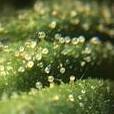Leaderboard
Popular Content
Showing content with the highest reputation on 05/14/2023 in Posts
-
Got some bud pics of the organic harvest. Radical Juice - Ripper Seeds The colour speaks for itself. It looks dangerous, and slaps like a they/them. The smell is of grapefruit. Smoke is a bit harsh, a friend said it gets them right down the windpipe, but the aftertaste is great. Definitely has that bag appeal and I could imagine a grow club selling this at a premium because of the colour. It's also dense as fuck. Zombie Bride - Ripper Seeds This is a personal favourite. I have been trying for long now to find a good wedding cake cultivar. The smell is of icing. She's not much of a looker, but my god is she a smooth and sweet smoke. This is the weed I always wanted for myself. Now that I have it, I do not look forward to getting a tolerance for it. Slightly more dense than the Radical Juice.2 points
-
I am new to this forum and new to the hobby. My wife is using expensive medical grade cannabis for a few years now, and I can say that this literally saved her life at one stage. Nothing else wanted to break the inflammation she had, accept for high quality CBD. I would now like to make my own growth cabinet to grow for our personal medical use. I am not a recreational user though.2 points
-
Plants are now getting the life I like to see in them. Like to think that their immune system has overcome the attacks from the environment. Branches (clonez) starting to form nicely as well. Due to funds low and all I need to wait for payday before I can clone and flip them. By the time I got cloning supplies the side branches should be immaculate clone size. This is a very fun journey, would not be possible without this forum where I document and keep focus. As well as the strain I'm growing is all thanks to our previous grow off, I won this strain when I took 3rd Place. Thank you @420SA.2 points
-
Interesting. I see this part of the forum is not very active. I thought that controls would be of considerable interest. I am an industry expert in controls and I also design my own, but I also do like it when systems can me made to run on more natural means. I would however like to investigate designing a monitoring and control system for the room I plan. With a custom designed controller, one can often get great value for money if you have a nice big integrated controller with a single processor and the I/O's on the board are well thought out for the application. This means minimal circuitry is needed and you end up with a board that can be very repairable compared to commercial controllers. An integrated board also makes data logging considerably easier - especially in terms of event recording. I have already designed and implemented a large controller for a Micro-Greens cabinet. It can do pretty much everything. It has 4 circuits of lights with independent timers, 5 spray circuits with independent timers, it switch circulation fans and the aircon units in duty/standby fashion, it can also do humidification, control a dual axis solar tracker, 3 storage tanks with level control and it has generator control where one can automate the startup of cheap chinese generators. It has a touch screen that gives you clear and precise feedback of every I/O under control. That is probably not a bad platform to start from for a comprehensive cannabis controller. Lets say you are a serious breeder and can dream wild, what would you have liked to have in such a system? My first reaction: 1. Obviously temperature control, duty standby. 2. Humidity control in a case like this is also a must. Small addition if one want to go the full monty. 3. Backup water tank level control, with pressure pump control. 4. Automatic watering cycle with soil moisture sensor 5. Then I would like to have multiple temperature sensors. 6. Lux sensors could perhaps be considered, although I have not found the perfect ones yet. 7. Generator control is certainly on the list for a serious room. Then it can start a dumb generator automatically. 8. Probably CO2 control, but CO2 sensors are unfortunately maintenance items and does not last forever. Right, what one needs to consider though is how Temperature control, humidity control and CO2 control effects each other. As far as I can see, CO2 should be above a minimum level and upper limits can be quite high - high enough that it would not be a limiting factor to cator for. To raise minimum levels, add fresh air or dose it from a bottle if you have the money. Humidity can obviously be a problem if it goes too high or too low. An air conditioner will always lower humidity when it runs, but it cannot be the primary means of reducing humidity as at some point the room temperature can become too low. Humidification in itself is something I would avoid like the plague as humidification devices are notoriously unreliable. The question is then: Is LOW humidity often a problem in a cannabis room, or only high humidity. The latter can at least be catered for by either the AC unit or adding some fresh air.1 point
-
As an engineer, I cannot help but to design my stuff as well as I can before I build. I would appreciate some input on the concept below. It is still early and good ideas can be incorporated. I am in the process to plan my own room. However, I am off grid so power input to the system is a big concern for me. I need to get very economical on power use when I have no solar. I understand that cannabis are a bit different than other plants and prefers blue spectrum light during the vegetation phase and red spectrum during the flowering phase. Currently, the information I have is that the following LUX levels are required: Seedling: 7000 Lux Vegetation Stage: 15 000 - 50 000 Lux Flowering Stage: 50 000 - 70 000 Lux I am currently busy with a LED light design, and I can find fairly good LED's with an efficiency of about 120 lm/w for both 3000K and 5000K. The light will have 4 channels: 1/3 5000K, 2/3 3000K, a bit of IR at 840nm and I consider some UVA at 365nm. That said, the UVA LEDS are seriously expensive and I cannot find conclusive proof that it has any positive effect. However, it is easier to make provision for this in the circuit and leave out the components if one choose to. All channels will be fully dimmable, so one can for example blend the 3000K and 5000K if you want to which should give really good control between red and blue spectrum for those who wants to experiment. I want to work on a LUX level of 25 000 for the 5000K, which if one use 18/6 timing, I will have to run at least for 8-10 hours from a battery or generator. In his time I want to use as little power as possible. For the 12/12 stage I want to work on a Lux level of 60 000 for the 3000K. In this case 4 hours will be out of solar. In total then, IR excluded, a lux level of 85 000 would be possible if all circuits are used. Too high I know, but read further and you will see why. So, if in the day during vegetative stage I have more solar power, I can dial in some 3000K to the 5000K to increase lux levels if I want to. I assume IR and UV will burn all the time. Right, so in terms of maintenance, I want to make the panels a bit more modular as I hate things that are not serviceable, and secondly provides no redundancy. My experience of the past few years in the building industry, is that not even from the premium brands, we get the quoted life they claim any more. So, I am going to assume that some circuits will fail prematurely. For the reason above, I decided to work on an external 27 VDC supply. Although this makes wiring more cumbersome, the LEDS can be arranged such that should any fail, at most a string a of 8 LEDS will go dead. This will at least provide some form of redundancy on the same fitting. I can go 24VDC too, but that will require a 7-string LED. It is quite a challenge to match up the different voltages as some of the LEDS rapidly loose performance with only a 0.1V difference on the input. I also like low voltage in the room more than high voltage especially since one can have problem with moisture in the room. Also, with external supplies, it can be placed outside the room so that the heat load to the room can be smaller if required. The modules will be repairable if you have a SMD station so individual LEDS that failed can be replaced. In terms of control, I have not quite decided yet what I want to do. I can do an external controller and daisy chain a bus cable between the lights. If the controller fails in this case, one can at least switch the lights manually with a simple work around. I can also use an ESP32 and make the control wireless. If the software fails, you may need to go to each light individually to switch it. What I do want if there is a UVA channel, is to have a door switch that will automatically switch it off if the door opens. Currently, I do want to save some costs, so I do consider the following: 1. Treat the PCB with a conformal coating to make it water proof and have no enclosure. I will be suspended as a bare flat panel - another reason for going 27VDC 2. I the above case, all I do then is to simply increase the size of the PCB. The LEDS use the copper layer as cooling and with enough surface area there one would not need any fans. 3. A further advantage then of a larger PCB is obviously that the lights are further apart which will help a little with better light distribution. 4. The board will be designed to run at 60°C at an ambient of 35°C. I can for argument sake also put a temperature sensor on the board to monitor the light. There is really a lot of things one can do. Does the above sound feasible for those who want more control of their lighting?1 point
-
Question: What if I incorporate the light fitting and the ventilation? Make it a low density 400x400 light fitting with perforations through which one can then also have a very nice downward flow through the plants? 4 fittings on a 1.2x1.2m tent.1 point
-
Look, it is not a matter of simply disregarding your figures. A "wrong" value is not bad if it is at least accurately wrong all the time. You het my drift? We often have to work with what we have. The actual driving force as you have mentioned, is indeed vapour pressure. Most people - engineers included - have no idea that this is the fact. However, difference in vapour pressure is not something one can measure easily - most of that eventually is determined empirically.1 point
-
Definitely true. In that case disregard all my measurements. The dehumidifier and tent plus ventilation might be a factor as well.1 point
-
I'm aware of MiGro, clever dude. You can definitely do it that way as well.1 point
-
https://migrolight.com/blogs/grow-light-news/cheap-par-meter-hack-use-a-lux-meter-to-measure-par-accurately Perhaps not a bad ay of doing it initially.1 point
-
Being an HVAC designer, Psychrometrics is my forté and I had at one stage a commercial biltong drier on the market that worked on the refrigeration principle. So at least I can follow this discussion. To get down to 40% is very rare in natural conditions so I highly doubt your figures. What I suspect is that you used one of these electronics Temperature/humidity meters to give an indication. However, electronic humidity sensors - even the good ones - are far less accurate than what the data sheets claim. Even very expensive sensors gave me erroneous readings on high and low values. Usually below 50% they start to runaway to the low side, and above 90% they start to run away on the high side. I have seen this over and over especially in laboratories where I had to do full humidity control. At least though the runway is fairly accurate, but all it is then is a figure that you can use as reference for the meter you have. The most accurate way for me is still the old dry bulb / wet bulb thermometer. Nothing can fool that. It is perfectly reliable anywhere in the range. I have to agree that high humidity will cause you trouble within the hour. We also had that in the biltong rooms. If the system goes down you need to take immediate action.1 point
-
Ouch! I can see why that sensor is so expensive. I don't know of a single component that has that range. It probably has multiple elements and some fancy software inside.1 point
-
In the pursuit of obtaining the perfect environment, the optimum vapor pressure deficit (VPD) is used in order to program your perimeters. I wouldn't worry too much about CO2 unless you're going to push your umol past 700 and do CO2 injection. You'll probably forget about the lux once it's dialed in during setup and after a few runs. I would rather have a grow room in low humidity during the entire run than I would want a room with high humidity. They say you want a humidity of 60% during veg and below 40% for flower. I have grown a full cycle with a room below 40%. I have only ever experienced bud rot and fungus issues if the environment goes above 60%. This can also happen very quickly so even if you experience a high humidity for an hour or two like during loadshedding it could cause issues. You don't want to give any latent spores in the air any reason to bloom.1 point
-
Apogee makes a par meter, locally it would be something like this.1 point
-
OK, so the umol values are probably not related to lux as the lux meters are tuned to measure human perception. Do you get a specific meter or sensor for that?1 point
-
Always cheaper to build than to buy. The prices are slowly coming down and prices from Shenzhen directly are also not terrible. But definitely build it yourself if you can, Mr. Manly Engineer man If you can hook up a potentiometer and a small watt display that'd also be tops. IR in my opinion is also a bit of a gimmick such as UVA. Again, a lot of people start throwing in all these wavelengths and lose focus on the environment. Those extra chips won't do anything for a fungus outbreak or a bad pH. It's all about the umol at the end of the day. For a standard 240W QB panel you're looking at a umol of roughly the below, just as reference. Remember we want about 700 umol max during peak flower. It sounds like your lux targets should be correct. I run my boards at 30cm from the canopy at all times from the point that the plant is bigger than 30cm itself. At max per 1.2m² during peak flower I'm running about 440W. At the moment that accommodates a max of 5 plants, and I am experimenting with running 4 or 5 at the moment with different veg times and training to see what is most efficient.1 point
-
Cool, then we are on the same page. That is then why I have less 5000K in my lamp. Right, so I should still add some 5000K during flowering to keep the plant shorter then which in the end can be switched off completely. If you say 240W on 1.2x1.2 that basically speaks to my calculations - that is now of course if we assume the LEDS are similarly efficient. I see that only the very white LEDS upwards of 6500K achieve up to 200 lm/w values, but they offer very limited performance at 660nm and even 550nm- which I think is rather important. BTW, I have seen a light here done by a member where he have put together a number of single row strips. That is also something to consider because one can then insert small amounts of 6500K lights if you want play around a little.. Engineering. Always a balancing of compromises. That said. Seems I better change to 24V as this is by far a more common power supply than the 27V. The latter however is perfect to keep a 24V battery on standby. I will be loads cheaper than a Samsung light for R 21 per watt.1 point
-
1 point
-
I saw in the other thread you probably want to go a bit bigger than just a small tent, but it sounds like you know more than just a straight-up beginner so I think you'll have success with this.1 point
-
The tent setup is certainly great for now. I have once done an aquaponics system in my back yard and went a little over the top for a starter. Problem then was it was just pre load shedding days and by the time we hit load shedding my system simply could not handle the unreliable power. It would require major mods that I never could get done. But what I can say is that the veggies we did get out of it, was lovely although it was only for a few weeks. Cannabis is certainly a lot easier to start up small.1 point
-
HI III_Evan, I am for no forced to work on Lux values as I have no other data on the LEDS in the sheets, so that is the reference I have. I made a Typo. I wanted 60 000 Lux on 3000K. But you are now making new suggestions. I thought that 3000K was almost exclusively needed for flowering stage, but you now say I should start with 3000K and later move over to 5000K. I assume though that the IR will work all the time. Do you mean that I should make provision then for 60 000 lux at 5000K? This sort of means that I will start vegetation stage at a 50% load on the 5000K and eventually add some 3000K. I will then have to change over to 3000K for flowering - perhaps with some 5000K in there and end of with only 5000K? If this is the case, then I will have to double up on my 5000K portion. I did investigate using dedicated 660nm LEDS but they are so low in power output that they will not add anything useful.1 point
-
Damn I didn't even know you had to have an account to see diaries I'm not sure what the solution might be but we have had a real issue with bots and I believe this might have been one way to deter them. I'm sure @420SA will let us know what he rates.1 point
-
Sounds pretty on-point to me my dude. I wish I had known how big you wanted to go before answering in your other thread My only real pointers is that more often than not it is more important to focus on environmental factors for optimal growth than it is for how much LUX your are working with. LUX is cool but most people here will use umol when deciding on light power. The standard at the moment is to achieve 700 umol at max during flowering stage. Any more than that is useless as the plant can only physically make use of 700 umol without carbon dioxide injection into the room. Some growers will find that their plants stress when running lights at maximum or that the environment gets too hot and stunts the plant. This is why I say environment is more important than lighting. Yes you need good lighting, but it isn't the only important thing when growing cannabis. Definitely right on there. UVA LEDS in my opinion are gimmicks. 3000k or 3500k full spectrum white light LEDs are all more than perfect to grow top tier bush. Interesting that you want to push 5000k during flowering. If you wanted to do that, I'd maybe suggest combining both the 3000k with the 5000k at the same time. Blue light helps keep the plant nice and short. The more red/yellow the light, the more susceptible you may be to over stretching. This will be strain specific though. The 5000k should in theory help push flowers more efficiently than the 3000k, but I still think you need some of the 3000k spectrum at the very least during pre-flower and then halfway through flower push just the 5000k. I'd personally be interested in the results. Just for reference, I have done full grows with both just the 3000k and 3500k with the same strains and in all honesty, I haven't noticed much difference in quality but the plants growing with the 3500k did stretch more during growing.1 point
-
You can do it! Keep it small and simple at first. You can get about 100g per plant if done perfectly. Start with either a 0.8x0.8m tent and grow just one plant, use a 120W LED from Light It Up, organic soil such as Organics Matter, and some 250ml bottles of BioBizz Grow, FishMix and Bloom. These bottles will last you more than one grow. This is actually the exact setup I'm building for a friend who wants to get into growing. It is the least fuss method and I've personally grown some absolute fire with it. Half the time you're just watering with tap water, the other half you feed with the BioBizz. There is also method to the madness. If you start getting serious and want to expand, you can then use this setup as a veg tent to supply a bigger flower tent to start a perpetual grow. But for now the one plant method should do while you get used to growing. The hardest part is seeding/cloning but once you get past that part you're golden. Other issue might be also guaranteeing you are growing what you actually want to grow. Some members here grew what they thought were high CBD specific strains only to finally harvest and it turns out to be a standard THC strain. Make sure you get either a genuine clone of a high CBD strain or that the seeds you are getting are also genuine. I'm pretty sure a member can point you in the right direction in that regard. When you do start growing, start a grow diary here and we can all help you out.1 point
-
@420SAhow do I make this diary public for people without accounts?1 point
-
1 point
-
I am a Mechanical Engineer with HVAC as main field. I design centralised chilled water plants. (Please don't bother me with split units or VRF hehehehe.) I can also design my own electronic controllers, so I will obviously design my own controller and monitoring system for my cannabis room.1 point
-
1 point
-
Thanks everyone. Been so much fun growing this one Sent from my iPhone using Tapatalk1 point
This leaderboard is set to Johannesburg/GMT+02:00




.thumb.jpg.40fa3417bb8f746949f0efeca5d720c1.jpg)


